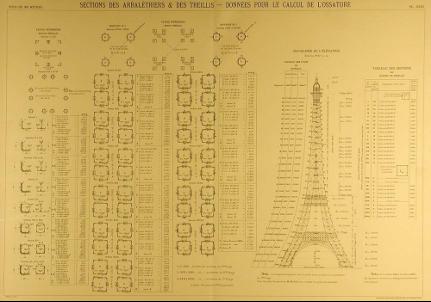EPFL's first female student graduated in 1903 – disguised as a man

Archives EPFL
A review of Parisian newspaper archives by EPFL’s Artificial Intelligence Laboratory (LIA) has turned up some astonishing discoveries. Among them, we now know that reinforced concrete was developed in Lausanne by a previously unknown daughter of Gustave Eiffel – who also turned out to be EPFL’s first female student.
Data mining can sometimes yield incredible surprises. By cross-referencing genealogical data, an archive of Parisian tabloids from the late 19th century and old EPFL enrollment records, an AI algorithm developed at LIA, within EPFL’s School of Computer and Communication Sciences, came up with a real scoop: EPFL’s very first female student actually graduated in 1903, but disguised as a man! What’s more she was a real celebrity: Gustave’s previously unknown daughter, born in 1879.
Tragic fates

First, a bit of historical background. By 1877, Gustave was already well-known throughout most of France thanks to the many structures and bridges he’d built using iron – a novelty at the time. But that was the year he lost his wife, who was only 32 years old at the time. Gustave never remarried, but he had a relationship that resulted in the birth of his fourth daughter. For discretion’s sake, she was baptized Ablette Bönickhausen using the Eiffel family’s original name. However, when Ablette was six years old, her mother died in an accident.
This incident, tragic for both father and daughter, was what enabled the LIA scientists to reconstruct Ablette’s extraordinary story. Her mother’s death was reported in Le Petit Parisien on 20 May 1885 and picked up by their algorithms, which then established a link between Gustave and Ablette since Gustave penned a death announcement that appeared a few days later in another newspaper.
Eiffel Tower blueprints, reviewed and corrected by a child

![]()
Following this initial discovery, the scientists used other algorithms to further their investigation – and found several clues that testified to Ablette’s brilliance. An automated handwriting analysis of 2,700 pages of Eiffel Tower blueprints established without a shadow of a doubt that several annotations made during the Tower’s construction were done in a child's handwriting. Next to one of them is a comment by Gustave, who was clearly proud of the work: “Exc. suggest. by AB. Absolutely critical. Implement immediately.” These discoveries call for a thorough analysis of the full impact of Ablette's input. An international comitee is already considering renaming the building: the Ablette & Gustave Eiffel Tower!
Destination Switzerland
Three years after the Tower opened to the public, Ablette left France for Vevey, Switzerland, accompanied by her 22-year-old half-sister Valentine Eiffel. In 1892, their father purchased a luxurious villa on the shores of Lake Geneva and named it Villa Valentine. It was demolished in 1978, but its pier, adjacent to Nestlé’s headquarters, is still called the Petit Port Eiffel. Why Switzerland? Gustave, who never quite got over being refused admission to Paris’ Ecole Polytechnique in 1852, had heard of the growing reputation of the University of Lausanne's School of Engineering. Founded in 1859, it was renamed EPUL and later EPFL. His intention was to enroll Ablette there, as her natural aptitude for engineering was already quite clear.
Facing (un)equal opportunity
But women engineers were not common at that time. To improve her chances, Ablette decided to conceal her identity – again. Disguised as a man and sporting a fake moustache, she began her studies and graduated in 1903 under the name of Albert (nearly an anagram of Ablette) Bönickhausen.
During her time at the school, she reportedly invented the method for making reinforced concrete. Diploma in hand, she would later teach this method to Charles-Edouard Jeanneret, better known as Le Corbusier! It was in her honor that, in 1920, the famous architect decided to build the famous Villa Le Lac just steps away from the Petit Port Eiffel – an ideal setting for a fishing trip.
It’s all true – or almost!
Happy April Fool’s! “Ablette” might well have been a charming, old-fashioned woman's name, but it’s actually a small freshwater fish. No proof has been found that Gustave Eiffel had a hidden daughter – despite our computer scientists’ extensive investigation efforts.
Nevertheless, our School can boast that we awarded one of the first – if not the first – engineering degree to a woman in Europe, in 1905: Cécile Butticaz. The second female EPFL graduate, Erna Hamburger, became the first woman in Switzerland to be appointed a professor. Every year, a Foundation gives an award bearing her name to an outstanding woman scientist.
Luckily, today you don't need a moustache to study at EPFL. Our School has stepped up its efforts to encourage women to pursue careers in science and engineering – and this year we created a Vice Presidency for Responsible Transformation to help coordinate these initiatives. What's more, as of 1 June, for the first time in its history, EPFL’s upper management will have complete gender parity.